What Material Is Used for Marine Fenders? A Complete Guide
05/06/2025What is a pneumatic rubber fender?
05/07/2025What Are Rubber Fenders?
Rubber fenders (also known as dock bumpers) are essential components in maritime operations. They protect vessels and docks from damage during docking or mooring. Made from durable rubber, these fenders absorb the impact energy when a ship makes contact with a pier or another vessel, preventing damage to both the ship and the dock. This reduces repair costs and ensures smoother operations.
Why Is This Issue Important and Urgent?
Imagine this: A massive cargo ship is approaching a dock at full speed. Without any protection, the force of the impact could cause significant damage to both the ship and the dock. The repair costs would be astronomical, and there could be serious safety risks for workers and crew.
As global shipping continues to expand, more and larger vessels are entering ports. The increasing size and weight of modern ships mean that effective protection against collisions is becoming even more urgent. Marine fenders and boat bumpers of docks are crucial in reducing the risk of damage, improving safety, and ensuring efficient port operations.
What Are Rubber Fenders?
Rubber fenders are shock-absorbing devices used at docks and on ships to reduce the impact during docking or mooring. Made from high-quality rubber, they come in a variety of shapes and sizes to suit different needs. Some fenders are cylindrical, others are spherical, and some are flat. They serve to protect both the vessel and the docking structure from damage.
Benefits of Rubber Fenders
Durability: Rubber fenders are long-lasting and resistant to wear, even in harsh marine environments. This makes them a reliable choice for busy ports and docks.
Energy Absorption: The primary function of these fenders, such as boat dock bumpers, is to absorb the energy when a vessel makes contact with the dock. This significantly reduces damage to both the vessel and the dock.
Cost-Effectiveness: By preventing frequent repairs, these fenders help save money in the long run, making them a cost-effective solution for ports.
Versatility: Whether used in ports, on offshore platforms, or for smaller boat docking, marine fenders are effective across a wide range of maritime environments.
Different Types of Rubber Fenders
Super Cone Fenders: These are commonly used in ports for their excellent energy absorption properties. They are ideal for medium to high-impact situations. The Super cone fenders in NANHAI have better performance on angle compression, and there is no performance loss under 10 degrees.
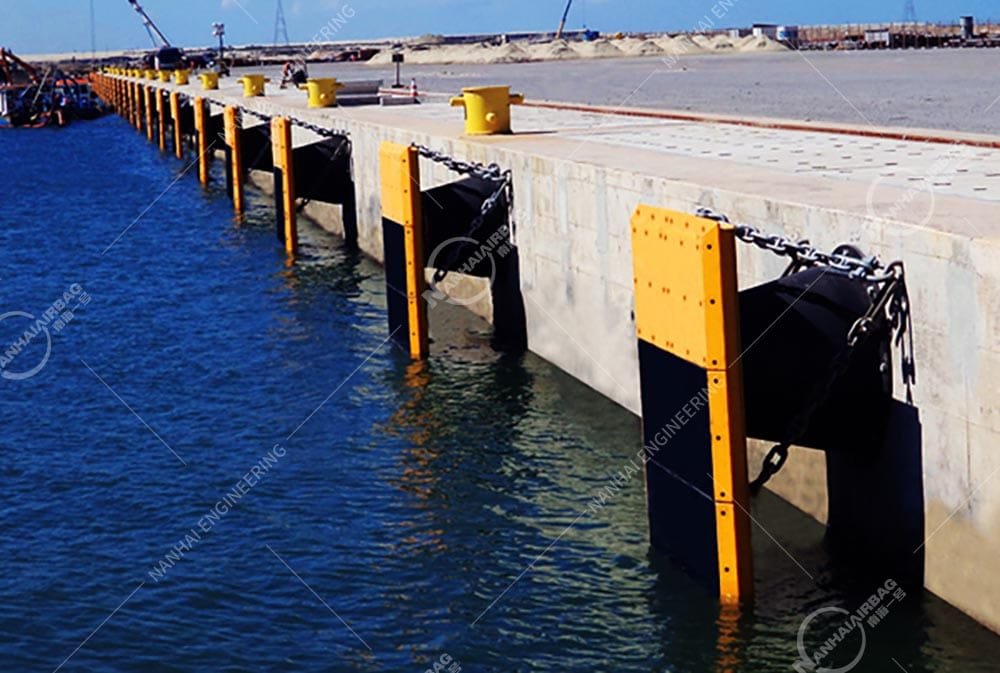
D-Type Fenders: Shaped like the letter “D,” these are often used for smaller vessels and in confined spaces, such as along quay walls. D fenders are easy to install, inexpensive, can adapt to harsh environments, and require almost no maintenance.
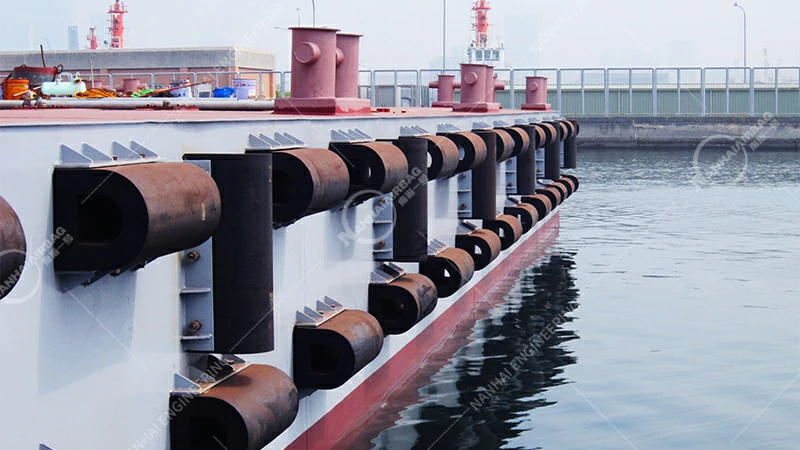
Super Cell Fenders: Designed for larger ships, these have a more complex structure that allows them to absorb more energy.NANHAI Super Cell Rubber Fenders System includes: Cell Rubber Fender Body, UHMW-PE front panel, anchor chain and mounting Accessories etc.
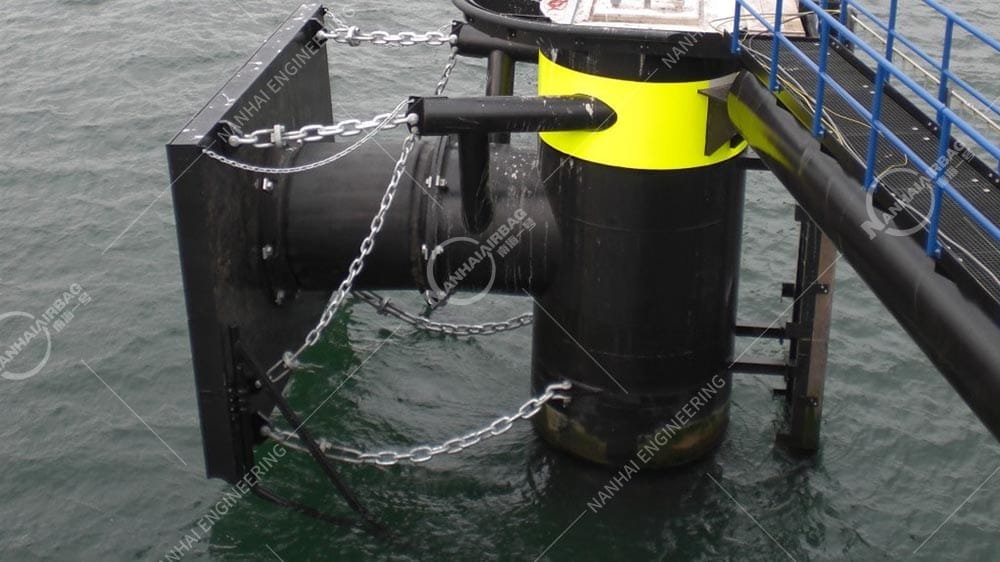
Element Fenders: The element fender absorbs energy through stamped rubber legs, minimizing the reaction force to the greatest extent. It is suitable for installation in areas with limited installation space.

Cylindrical Fenders: Cylindrical fenders are the most common fenders in the world. They are easy to install, cost-effective and highly adaptable. They are usually combined with arch fenders to form a fenders system.

Super Arch Fenders: Arch fenders are a durable and low-maintenance solution for larger or mid-sized vessels, offering excellent protection in high-pressure environments. Often paired with cylindrical fenders, they provide enhanced cushioning and safeguard against docking impacts.
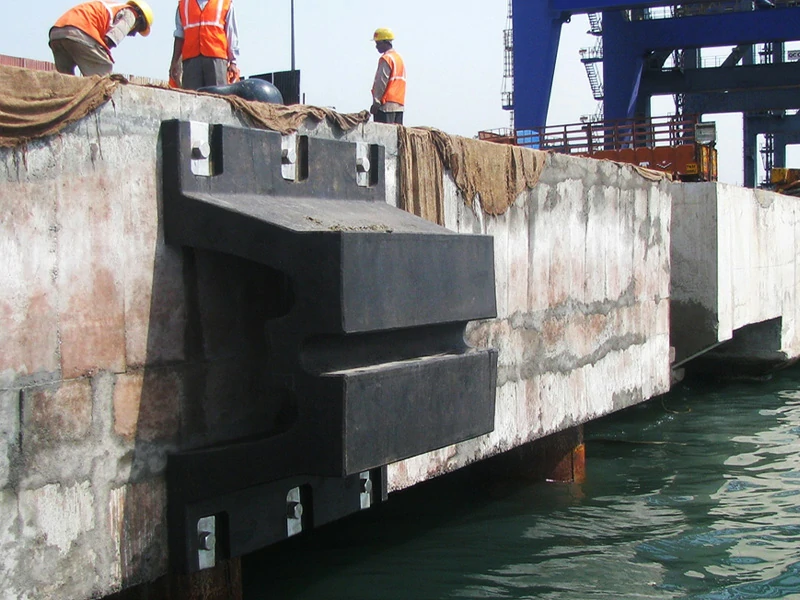
Pneumatic Fenders: Designed for efficient ship-to-ship cargo transfers, Nanhai pneumatic fenders require minimal maintenance, needing refilling only every six months. Compliant with ISO 17357 standards. Ideal for ports with significant tidal variations, they float and adjust to water levels, ensuring reliable performance in diverse conditions.
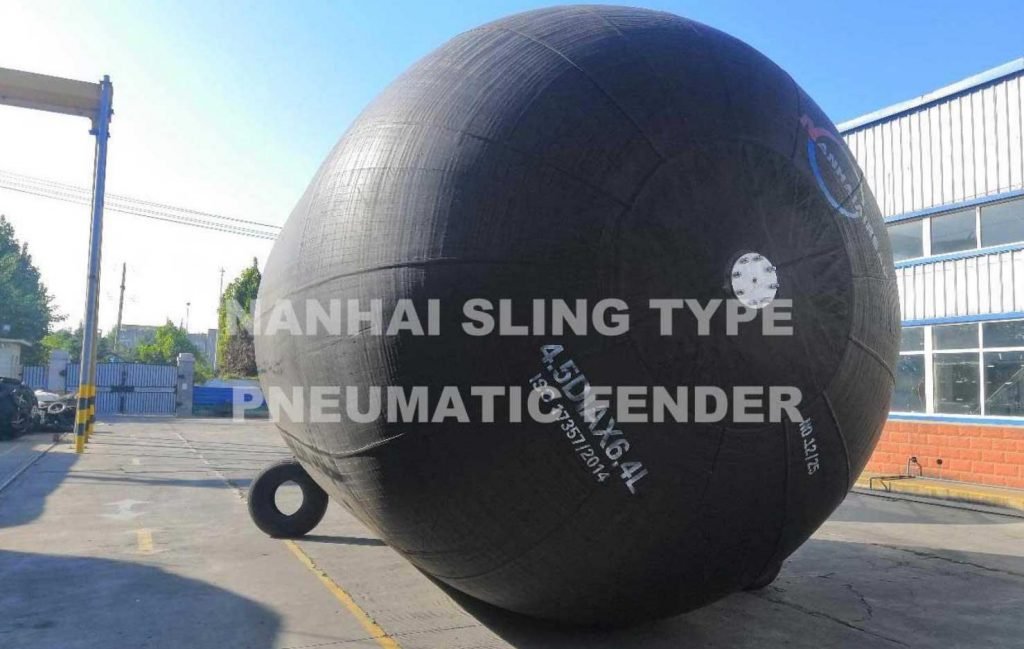
Each type of fender is designed to handle different docking scenarios, ensuring maximum protection for ships and docks.
Why Choose Rubber Fenders for Your Docking System?
Choosing fenders is about reliability and protection. When you invest in high-quality fenders, you protect your dock and your vessel from costly damages. Dock bumpers and boat bumpers of docks provide long-term solutions by effectively absorbing impact and reducing the need for repairs.
Related Questions – People Also Ask
1. How do rubber fenders work?
Fenders absorb the impact energy when a vessel docks. The rubber compresses upon impact and gradually releases the energy, reducing damage to both the vessel and the dock.
2. Why are rubber fenders preferred over other types?
These fenders are preferred for their durability, energy absorption capabilities, and low maintenance requirements compared to other materials.
3. What is the lifespan of rubber fenders?
With proper maintenance, fenders typically last between 7 to 10 years.
4. Can rubber fenders handle large vessels?
Yes, marine fenders are specifically designed to accommodate both small and large vessels, providing high energy absorption for all types of ships.
5. Are rubber fenders environmentally friendly?
Yes, these fenders are generally recyclable and have a long lifespan, reducing waste over time.
Rubber fenders, including dock bumpers and boat bumpers of docks, are crucial for protecting your vessel and dock. They absorb impact, prevent damage, and help maintain smooth operations at ports. By choosing the right fender, you ensure the safety of your infrastructure and operations while minimizing repair costs.
